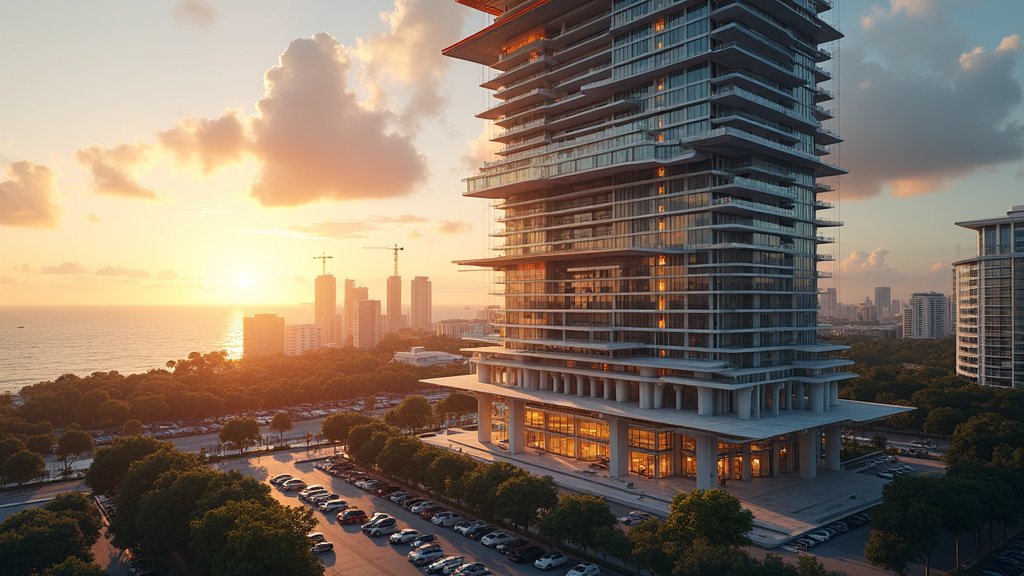A stark “dry spell” has gripped the Atlantic hurricane season, leaving meteorologists and coastal residents puzzled as the period traditionally marking the season’s peak arrives with unprecedented quiet. As of mid-September 2025, the Atlantic basin has recorded its lowest activity since 2014, and features the fewest hurricanes since 2002, marking an 18-day stretch without any active tropical systems—a rare occurrence in the modern satellite era. Despite this unusual lull, experts caution that the season is far from over, with significant storm activity often occurring late into September and October.
An Unusually Dormant Peak Season
The 2025 Atlantic hurricane season has defied initial predictions of an above-normal year. NOAA’s May outlook suggested a 60% chance of an above-normal season, forecasting 13 to 19 named storms, including 6 to 10 hurricanes and 3 to 5 major hurricanes. Similarly, Colorado State University projected 17 named storms, nine hurricanes, and four major hurricanes. However, as of September 15th, only six named storms have formed, with Hurricane Erin being the sole major hurricane and the season’s most powerful storm, reaching Category 5 intensity. This limited activity has resulted in an Accumulated Cyclone Energy (ACE) index of approximately 39.3, significantly below the long-term average.
The current quiet period is particularly remarkable given that it coincides with the climatological peak of the season, which typically occurs around September 10th. An analysis of historical data indicates that this 18-day shutout of tropical activity during the peak stretch is unprecedented in the modern satellite era, dating back to 1966. The last time a September saw such a lack of activity was in 1939, though that was before the advent of advanced satellite tracking.
Factors Contributing to the Silence
Several atmospheric and oceanic conditions are contributing to the unusually quiet period:
* Dry Air and Saharan Dust: Surges of dry air and Saharan dust across the Atlantic inhibit the development of moisture-rich environments crucial for hurricane formation.
* Increased Wind Shear: A strong weather pattern in the western Atlantic is creating significant vertical wind shear, which disrupts and tears apart developing tropical systems.
* Atmospheric Stability: Sinking air over Africa suppresses the intensity of weather waves that often initiate hurricane development. Additionally, cooler-than-average sea surface temperatures off the coast of Africa have sapped energy from potential storm systems in their typical birthplace.
* Monsoon Trough Interaction: While a tropical wave is being monitored for potential development, current models suggest it will remain over open waters and is not an immediate threat to land. However, experts are closely watching systems emerging from Africa, with some forecast models indicating that conditions could become more favorable for development later in September and into October.
A Cautionary Tale: The Backloaded Season
Despite the current calm, forecasters emphasize that hurricane seasons can be heavily backloaded. Historically, a significant portion of tropical activity occurs after the statistical peak, with October often bringing impactful storms. This phenomenon was particularly evident in the 2024 season, which experienced an unusual mid-season lull before delivering major hurricanes in late September and October.
Experts suggest that large-scale conditions may become more tropical cyclone-favorable later in September. The potential for the Madden-Julian Oscillation (MJO) to intensify and shift into a phase more conducive to storm development, coupled with a possible transition to La Niña conditions which typically reduce wind shear, could support increased activity. Warm sea surface temperatures in the western tropical Atlantic and Caribbean also typically favor late-season activity.
Late-Season Threats and Preparedness
While the Atlantic has been dormant, the Gulf of Mexico remains notably warm, posing a potential risk for late-season development and rapid intensification. Coastal residents, including those in areas like Miami, are urged to remain vigilant and prepared, as it only takes one storm to cause catastrophic damage. NOAA’s National Hurricane Center, in collaboration with other agencies, continues to monitor developing systems. A tropical wave, designated Invest 92L, is currently being watched for development in the central tropical Atlantic, with an 80% chance of forming into a tropical depression or storm within the next week. While current models suggest this system may steer clear of the U.S. mainland, staying informed is crucial.
The quiet start to the 2025 season serves as a reminder that conditions can change rapidly. Preparedness remains the key message, as the calm experienced during the peak weeks could be just the prelude to a more active and potentially dangerous latter half of the season. The trending news surrounding this unusual weather pattern underscores the unpredictable nature of hurricanes and the ongoing need for vigilance.
Looking Ahead
The quiet Atlantic hurricane season thus far is an anomaly, prompting scientific investigation into its causes. While the immediate outlook suggests a continuation of low activity for the next week, experts anticipate a shift towards more favorable conditions later in September and into October. The possibility of a backloaded season means that coastal communities must remain prepared. The latest news and updates from meteorological agencies will be critical for staying ahead of any potential late-season threats. The headlines surrounding this unprecedented quiet period highlight the dynamic nature of tropical meteorology and the persistent need for disaster preparedness along the U.S. coast.





